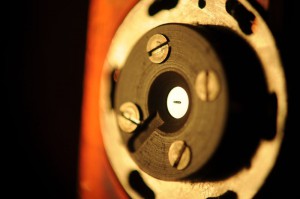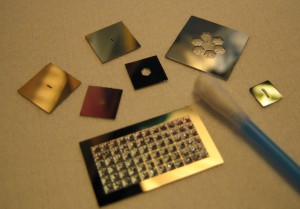Geometrical considerations

Example of a closed system for a liquid or a gas. The membrane is rectangular to maximize the useful area for a thin beam coming in at an angle of 45 degrees from the surface normal and exiting at 90 from the incident beam.
Membranes are typically supplied on a silicon frame with a size of 10*10mm. Other sizes are also possible, for example the frame can be 5*5mm.The frame thickness can be any of the available silicon wafer thicknesses, but most common are the 200 and 300 micrometer ones.
The clear aperture of the membrane is typically 2-3 mm by 300-500 micrometers. Other sizes can be provided – however, the combination of the thickness, clear aperture and maximum pressure difference of the membrane is limited.
The thickness of the carbon is typically 100nm. Thinner membranes, for improved transparency, can be made – but again, there is a limit to how thin they can be depending on size and pressure difference to sustain.
Geometry flexibility

Some examples of possible geometries. Varying the shape of the membranes can facilitate new ways of using them.
Many different shapes and sizes can be created for different purposes. If you have ideas you want to test, please get in touch at your earliest convenience. We have experience in collaborating with scientists on instrumentation development, and can function as a consultant for your projects and designs.